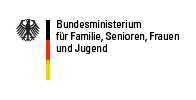History
The History of gender mainstreaming
The strategy Gender Mainstreaming did not come into being at a certain hour or in a certain place, nor does it have a single thread of history. Gender Mainstreaming is the result of various different international and national gender equality policy activities. There are moreover several events which have made a particular contribution to its development and spread, and these are described here in more detail.
The strategy Gender Mainstreaming developed from a variety of discussions and initiatives in the field of international gender equality and development policy. In the 1970s and 1980s, the emphasis was initially on taking the interests of women into account at all levels of current and future development work. This demand was designated as mainstreaming in the “Women in Development” (WID) initiative and seen as a double strategy. A double strategy because the aim of the initiative was at the same time the development of promotion programmes specifically for women and the inclusion of women in mainstream power structures.
Within the framework of the 3rd World Conference on Women in 1985, criticism of the existing form of development policy and the resulting demand for stronger integration of women into the mainstream was gone into, and this gave rise over the next few years to the initiative “Gender and Development” (GAD). Within this paradigm, the demand was for the introduction of the category Gender into the running of all projects and programmes of the development institutions, i.e. into the mainstream. The strategy Gender Mainstreaming developed from the linking of “gender” with the “mainstream”.
At the 4th World Conference on Women in Beijing in 1995, Gender Mainstreaming was introduced as a strategy in European gender equality policy, given force as a cross-sectional topic and established in the 4th Working Platform of the World Conference on Women. The consequence of this was that all Member States were obliged to develop a concept for the implementation of Gender Mainstreaming as part of their national strategies.
It is clear from the beginnings of the strategy Gender Mainstreaming briefly outlined here that Gender Mainstreaming began at international level. From there, following the top-down principle, Gender Mainstreaming was also implemented at European level and, in Germany, at Federal level and at the level of the Länder (federal states). These developments are very closely connected and have influenced each other. So that the individual steps in implementation can be better understood, however, we are presenting them here separately from each other:
The strategy Gender Mainstreaming developed from a variety of discussions and initiatives in the field of international gender equality and development policy. In the 1970s and 1980s, the emphasis was initially on taking the interests of women into account at all levels of current and future development work. This demand was designated as mainstreaming in the “Women in Development” (WID) initiative and seen as a double strategy. A double strategy because the aim of the initiative was at the same time the development of promotion programmes specifically for women and the inclusion of women in mainstream power structures.
Within the framework of the 3rd World Conference on Women in 1985, criticism of the existing form of development policy and the resulting demand for stronger integration of women into the mainstream was gone into, and this gave rise over the next few years to the initiative “Gender and Development” (GAD). Within this paradigm, the demand was for the introduction of the category Gender into the running of all projects and programmes of the development institutions, i.e. into the mainstream. The strategy Gender Mainstreaming developed from the linking of “gender” with the “mainstream”.
At the 4th World Conference on Women in Beijing in 1995, Gender Mainstreaming was introduced as a strategy in European gender equality policy, given force as a cross-sectional topic and established in the 4th Working Platform of the World Conference on Women. The consequence of this was that all Member States were obliged to develop a concept for the implementation of Gender Mainstreaming as part of their national strategies.
It is clear from the beginnings of the strategy Gender Mainstreaming briefly outlined here that Gender Mainstreaming began at international level. From there, following the top-down principle, Gender Mainstreaming was also implemented at European level and, in Germany, at Federal level and at the level of the Länder (federal states). These developments are very closely connected and have influenced each other. So that the individual steps in implementation can be better understood, however, we are presenting them here separately from each other:
erstellt von Administrator
—
zuletzt verändert:
02.01.2010 20:07






